Ascorbic Acid (better known as Vitamin C) is a water soluble vitamin and essential for the biosynthesis of collagen, which is an essential component in connective tissue, which in turn is essential for wound healing. As such it is most famously needed to stave off scurvy and is critically important for normal immune function, but also plays a role in the biosynthesis of L-carnitine and certain neurotransmitters, as well as protein metabolism. Furthermore, Ascorbic acid is an important antioxidant, has been shown to regenerate other antioxidants such as alpha-tocopherol (vitamin E), and improves the absorption of iron from plant sources (non-heme iron).
As opposed to a common belief, ample Vitamin C intake, i.e. intakes far above the recommended minimum have not been associated with a reduced risk of catching the common cold under normal circumstances (not exercising heavily in the arctic), but it may reduce the duration of the illness.
Being water-soluble, it is stored in the liver and heart in small quantities, but excess amounts will be expelled quickly. This means we need an adequate, ongoing (daily) supply to keep Vitamin C levels in the optimal range. Interestingly, most animals can synthesize Ascorbic Acid endogenously, but humans cannot, so it is a critical component of our diet.
This article will cover the recommended intake levels, why we want to reach those levels, the dangers of overconsumption, and which foods are richest in Vitamin C. As a twist, we sort foods by their nutrient to calorie ratios, as opposed to the more common per 100 gram values. This is because per calorie values correct for water content, and satiation, but more on that later.
Note that all recommended intake figures below are based on the needs of a 31 year old non-pregnant, non-lactating woman on a 2000 kilocalorie diet. Your personal requirements may differ (wildly). One way to figure out your individual needs, including calories per day, is the FooDosage Nutrition Calculator. It's free, by the way.
Recommended Vitamin C Intake
The recommended intake range for Ascorbic Acid, as set by the National Academy of Sciences:Recommended minimum intake (RDA): 75 mg per day
Upper limit: 2000 mg per day
Note that your personal requirements may differ depending on your age, sex, pregnancy-, and lactation status.
Special Considerations
"Individuals who smoke require an additional 35 mg per day of vitamin C over that needed by nonsmokers. Nonsmokers regularly exposed to tobacco smoke are encouraged to ensure they meet the RDA for vitamin C."
Importance of an Adequate Ascorbic Acid Intake (Dangers of a Deficiency)
Though Vitamin C deficiencies are rare in western countries, they do occur in people with limited food variety. The main dangers of a deficiency are:
- Scurvy, the symptoms of which include:
- Fatigue
- Inflammation of the gums
- Collagen synthesis becomes impaired and connective tissues become weakened, causing petechiae, ecchymoses, purpura, joint pain, poor wound healing, hyperkeratosis, and corkscrew hairs
- Depression
- Swollen, bleeding gums
- Loosening or loss of teeth due to tissue and capillary fragility
- Possible iron deficiency anemia, due to lower non-heme iron absorption.
Risks of an Excessive Vitamin C Consumption (Side Effects)
As a water-soluble vitamin, excess Ascorbic Acid is usually expelled via urine without complication. As opposed to fat soluble vitamins, liver toxicity is not a big danger.That being said, amounts in excess of the 2000 mg upper limit can cause side effects. These include:
- Gastrointestinal disturbances, including:
- Diarrhea
- Nausea
- Abdominal cramps
- Kidney stones
- Excess iron absorption
Top 12 Ascorbic Acid (Vitamin C) Food Sources
The highest concentrations of Vitamin C are usually found in cruciferous vegetables such as cabbage, kale, or broccoli, in citrus fruits, some berries, and some vegetables such as peppers and potatoes.Some choice examples of Ascorbic Acid rich foods:
Note that for this ranking, the foods were sorted by their nutrient/calorie contents, as opposed to the more common nutrient/gram sorting method. This is because per calorie values correct for water content, and satiation. Example: Butter may contain more Vitamin A than Spinach per 100 grams, but eating the 120 grams of spinach necessary to reach the minimum recommended amount of Vitamin A is by far more feasible (and recommendable) than to eat the 100 grams of butter required for the same amount of Vitamin A.
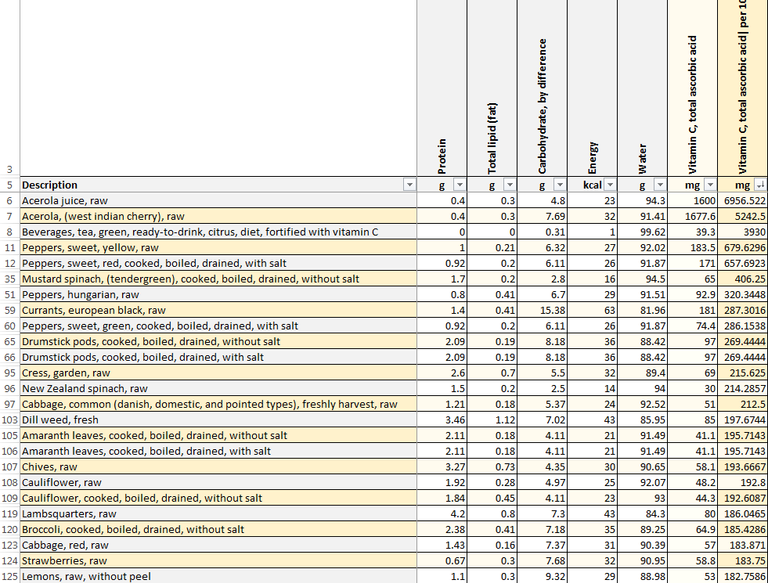 Ascorbic Acid (Vitamin C) Leaderboard – FooDosage Nutrition Calculator
Ascorbic Acid (Vitamin C) Leaderboard – FooDosage Nutrition Calculator
Acerola Berries
Vitamin C per 100 g (raw): 1677 mg (2237% of recommended minimum intake.)
Vitamin C per 100 kcal: 5243 mg (Corrects for water content and satiation.)
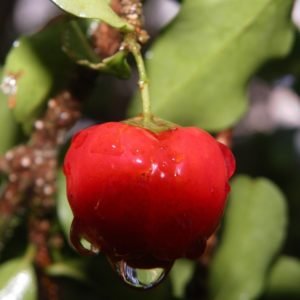
Calories per 100g: 32 kcal
You most likely won't find these ascorbic acid bombs at the local supermarket, but if you do, just one of these west Indian cherries a day will cover your daily minimum recommended intake for Vitamin C. Powdered acerola also makes for a natural, food based Vitamin C supplement, and is likely a lot more available.
Acerola berries are also a source of:
- Copper– at 0.09 mg / 100 g (10% of RMI)
- Pantothenic acid (B5) – at 0.31 mg / 100 g (6% of RMI)
- Magnesium– at 18 mg / 100 g (6% of RMI)
- Vitamin A – at 38 µg / 100 g (5% of RMI.)
- Riboflavin (B2) – at 0.06 mg / 100 g (5% of RMI)
Yellow Bell Peppers
Vitamin C per 100 g (raw): 184 mg (245% of recommended minimum intake.)Vitamin C per 100 kcal: 680 mg (Corrects for water content and satiation.)
Calories per 100g: 27 kcal
All bell peppers (sweet peppers), as well as all peppers in general, make for a good source of Vitamin C, but yellow bell peppers lead the pack. A great addition to leaf salads, they also take well to being grilled, and taste delicious when filled with ground beef (okay, maybe the beef is the delicious part).
Yellow bell peppers are also a good source of:
- Vitamin B6 – at 0.17 mg / 100 g (13% of RMI.)
- Copper– at 0.11 mg / 100 g (12% of RMI)
Mustard Spinach
Vitamin C per 100 g (boiled): 65 mg (87% of recommended minimum intake.)Vitamin C per 100 kcal: 406 mg (Corrects for water content and satiation.)
Calories per 100g: 16 kcal
For its low, low calorie count, mustard spinach certainly packs quite a punch in terms of Vitamin C and A contents.
Mustard spinach is also a good source of:
- Vitamin A – at 410 µg / 100 g (59% of RMI.)
- Folate (B9) – at 73 µg / 100 g (18% of RMI.)
- Calcium – at 158 mg / 100 g (16% of RMI.)
- Manganese – at 0.27 mg / 100 g (15% of RMI)
Currants (Black, European)
Vitamin C per 100 g (raw): 181 mg (241% of recommended minimum intake.)Vitamin C per 100 kcal: 287 mg (Corrects for water content and satiation.)
Calories per 100g: 63 kcal
Sour, but yummy, currants make for an excellent source of Vitamin C.
Black currants are also a source of:
- Manganese – at 0.26 mg / 100 g (14% of RMI.)
- Copper– at 0.09 mg / 100 g (10% of RMI)
Drumstick (Moringa) Pods
Vitamin C per 100 g (boiled): 97 mg (129% of recommended minimum intake.)Vitamin C per 100 kcal: 269 mg (Corrects for water content and satiation.)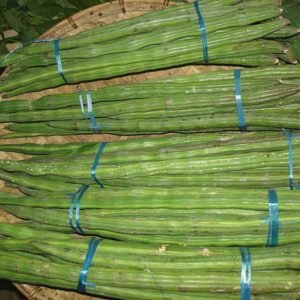
Calories per 100g: 36 kcal
Usually, its leaves are the part of the Moringa tree that really shine with their nutrient contents, but in the case of Vitamin C, the pods take the pole position. Of course, you'll probably be hard pressed to find any to buy nearby, but who knows, maybe you'll plant a drumstick tree in your garden.
Moringa pods are also a good source of:
- Dietary Fiber – at 4.2 g / 100 g (17% of RMI)
- Pantothenic acid (B5) – at 0.7 mg / 100 g (14% of RMI)
- Magnesium – at 42 mg / 100 g (13% of RMI.)
- Manganese– at 0.24 mg / 100 g (13% of RMI)
Garden Cress
Vitamin C per 100 g (raw): 69 mg (92% of recommended minimum intake.)Vitamin C per 100 kcal: 216 mg (Corrects for water content and satiation.)
Calories per 100g: 32 kcal
Vitamin packed, and many a kid’s first experimental foray into botany, cress makes a nice and tasty addition to salads and wraps. It’s very undemanding and easy to grow on a bit of cotton on the kitchen window still, ready to be harvested and replanted regularly.
Garden cress is also an excellent source of:
- Vitamin K – at 542 µg / 100g (602% of RMI)
- Vitamin A – at 346 µg / 100g (49% of RMI)
- Manganese – at 0.56 mg / 100g (31% of RMI)
- Folate (B9) – at 80 µg / 100g (20% of RMI)
- Vitamin B6 – at 0.25 mg / 100 g (19% of RMI.)
Cabbage
Vitamin C per 100 g (raw): 51 mg (68% of recommended minimum intake.)Vitamin C per 100 kcal: 212 mg (Corrects for water content and satiation.)
Calories per 100g: 24 kcal
A great source of Vitamin C, and an ingredient to delicious borsch soup.
Cabbage is also a source of:
- Folate (B9) – at 57 µg / 100g (14% of RMI)
- Manganese – at 0.16 mg / 100 g (9% of RMI.)
Amaranth Leaves
Vitamin C per 100 g (boiled): 41 mg (55% of recommended minimum intake.)Vitamin C per 100 kcal: 196 mg (Corrects for water content and satiation.)
Calories per 100g: 21 kcal
Another not exactly commonly found example of a Vitamin C rich food, not mentioning amaranth leaves seemed criminal, due to their broad range of relatively high nutrient contents for their low calorie count. And what do I know, maybe you live near an amaranth field, or plan to plant one now.
Amaranth leaves are also a great source of:
- Manganese – at 0.86 mg / 100 g (48% of RMI.)
- Vitamin A – at 139 µg / 100 g (20% of RMI.)
- Copper– at 0.16 mg / 100 g (18% of RMI)
- Magnesium – at 55 mg / 100 g (17% of RMI.)
- Vitamin B6 – at 0.18 mg / 100 g (14% of RMI.)
Chives
Vitamin C per 100 g (raw): 58 mg (77% of recommended minimum intake.)Vitamin C per 100 kcal: 194 mg (Corrects for water content and satiation.)
Calories per 100g: 30 kcal
Granted, you most likely will not be eating a hundred grams of chives in one sitting (though maybe you do, who am I to judge?), but adding some to your fresh cheese Knäckebrot (or bagel) makes for an easy and delicious way to up you Vitamin C intake, among other nutrients chives are very rich in.
Not to be confused with chive turkeys.
Chives are also a great source of:
- Vitamin K – at 213 µg / 100 g (236% of RMI.)
- Vitamin A – at 218 µg / 100 g (31% of RMI.)
- Folate (B9) – at 105 µg / 100g (26% of RMI)
- Manganese – at 0.37 mg / 100 g (21% of RMI.)
- Magnesium – at 42 mg / 100 g (13% of RMI.)
Cauliflower
Vitamin C per 100 g (boiled): 44 mg (59% of recommended minimum intake.)Vitamin C per 100 kcal: 192 mg (Corrects for water content and satiation.)
Calories per 100g: 23 kcal
A much more ecological source of Vitamin C than oranges (if farmed locally), cauliflower makes for a low calorie, nutritious, tasty side dish, or ingredient in a medley, as do many cruciferous vegetables (see below).
Cauliflower is also a good source of:
- Vitamin K – at 13.8 µg / 100g (15% of RMI)
- Vitamin B6 – at 0.17 mg / 100 g (13% of RMI.)
- Folate (B9) – at 44 µg / 100g (11% of RMI)
- Pantothenic Acid (B5) – at 0.51 mg / 100g (10% of RMI)
Broccoli
Vitamin C per 100 g (boiled): 65 mg (87% of recommended minimum intake.)Vitamin C per 100 kcal: 185 mg (Corrects for water content and satiation.)
Calories per 100g: 35 kcal
Cauliflower's rich brother (richer in nutrients, that is), broccoli makes for a very healthy side dish to a variety of main courses. Sprinkled with Parmesan, it’s also delicious.
Broccoli is also a great source of:
- Vitamin K – at 141 µg / 100g (157% of RMI)
- Folate (B9) – at 108 µg / 100g (27% of RMI)
- Vitamin B6 – at 0.2 mg / 100g (15% of RMI)
- Pantothenic Acid (B5) – at 0.62 mg / 100g (12% of RMI)
Strawberries
Vitamin C per 100 g (raw): 58.8 mg (78% of recommended minimum intake.)Vitamin C per 100 kcal: 184 mg (Corrects for water content and satiation.)
Calories per 100g: 32 kcal
Mmmh, Strawberries... This red archetype is usually the first thing that comes to mind when someone says the word berry, but not exactly the first association with Vitamin C. Well, today we clear up two misconceptions, as strawberries contain lots of Vitamin C, but aren't actually berries. The thing about being delicious with whipped cream still holds true though.
Strawberries are also a good source of:
- Manganese – at0.39 mg / 100 g (21% of RMI.)
But wait, where are the Oranges?
Excellent question. Citrus fruit in general surely is a good source of vitamin C, it's just not the best. Lemons barely didn't make the cut for our top 12, while oranges were in position 237 when sorted by per calorie values, and position 206 when sorted by per gram values. That doesn't make oranges a bad choice for Vitamin C, but if that's the main reason you've been eating or drinking them, and you don't live in an orange producing state, I suggest switching to one of the above alternatives.
For the original article, please visit www.foodosage.com.
If you enjoyed this article, and think others should see it, don't forget to upvote and resteem.
Bon Appetit :-)
Sources:
http://www.nationalacademies.org/hmd/Activities/Nutrition/SummaryDRIs/DRI-Tables.aspxhttps://ods.od.nih.gov/factsheets/VitaminC-HealthProfessional/
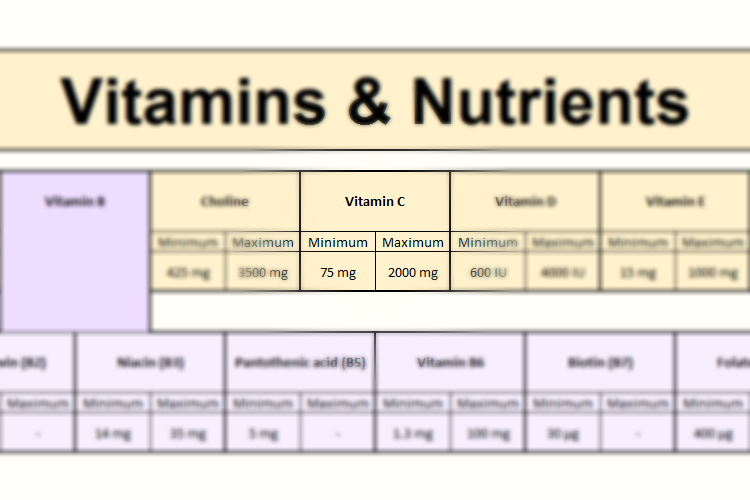
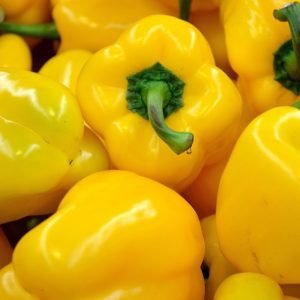
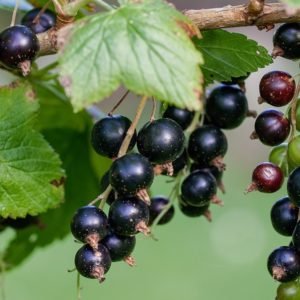
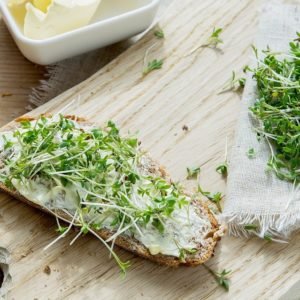
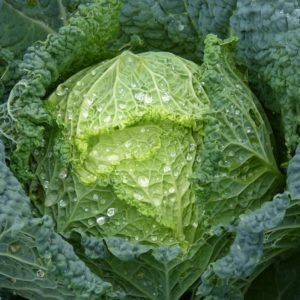
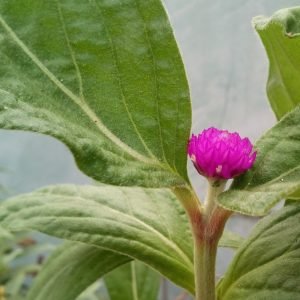
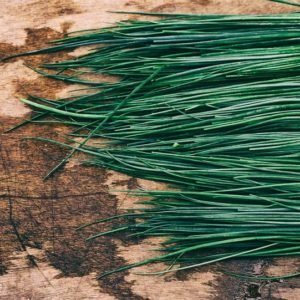
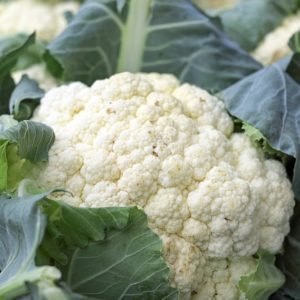
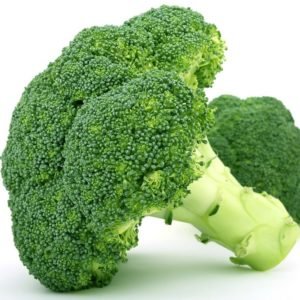
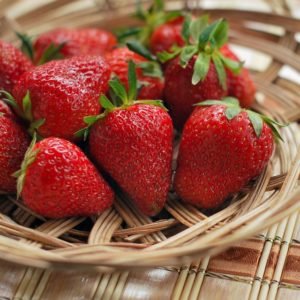
I'm not a real fan of Fruit & Veg unfortunately so have to take my daily Multivitamin instead.
I completely understand, as I'm not a big fan of most either. A good multivitamin, or specific vitamins, is the second best thing to nutritional vitamins and an absolutely solid choice. Your bloodwork will come out fine.
FYI: Chestnuts (43 grams per hundred), organ meats (20-40 g), and mollusks (clams: 25 g) also contain a respectable amount of vitamin C, as veggie and fruit alternatives.
But even though multivatamins do work, some vegetables in your diet have many benefits that are not covered by pills (e.g. antioxidants, dietary fiber, etc.). May I suggest finding at least one or two vegetables per category (legumes, tubers, cruciferous, etc.) and incorporating them into your diet? Your intestines will probably thank you.
Great information there. I love fresh fruits and especially veggies. I have to say, that acerola berry looks succulent! Do you know what they taste like? Are they sour?
Unfortunately I could never find them where I live, but I expect them to be sour given that Vitamin C is an acid and they have a LOT of it.
Yeah, that would make sense, lol.
Good article with lots of useful information!
I scoured the list and found two that I consume nearly everyday.
One is a hot cup of green tea in the morning and a glass of lemon(squeezed lemon in water) in the afternoon. Never go wrong with them, for my daily dose of Vitamin C.
Cool, but keep in mind that tea on the spreadsheet is of the artificially fortified nature. The grey items are just there as filler, or sometimes as unrealistic alternatives (like many native American foods). Lemon on the other hand is great of course :-)
You looks great, keep it up :) @ponimayu
Yeah... You didn't read a single word of the article.
click here!This post received a 4.5% upvote from @randowhale thanks to @ponimayu! For more information,
Congratulations @ponimayu! You received a personal award!
You can view your badges on your Steem Board and compare to others on the Steem Ranking
Vote for @Steemitboard as a witness to get one more award and increased upvotes!